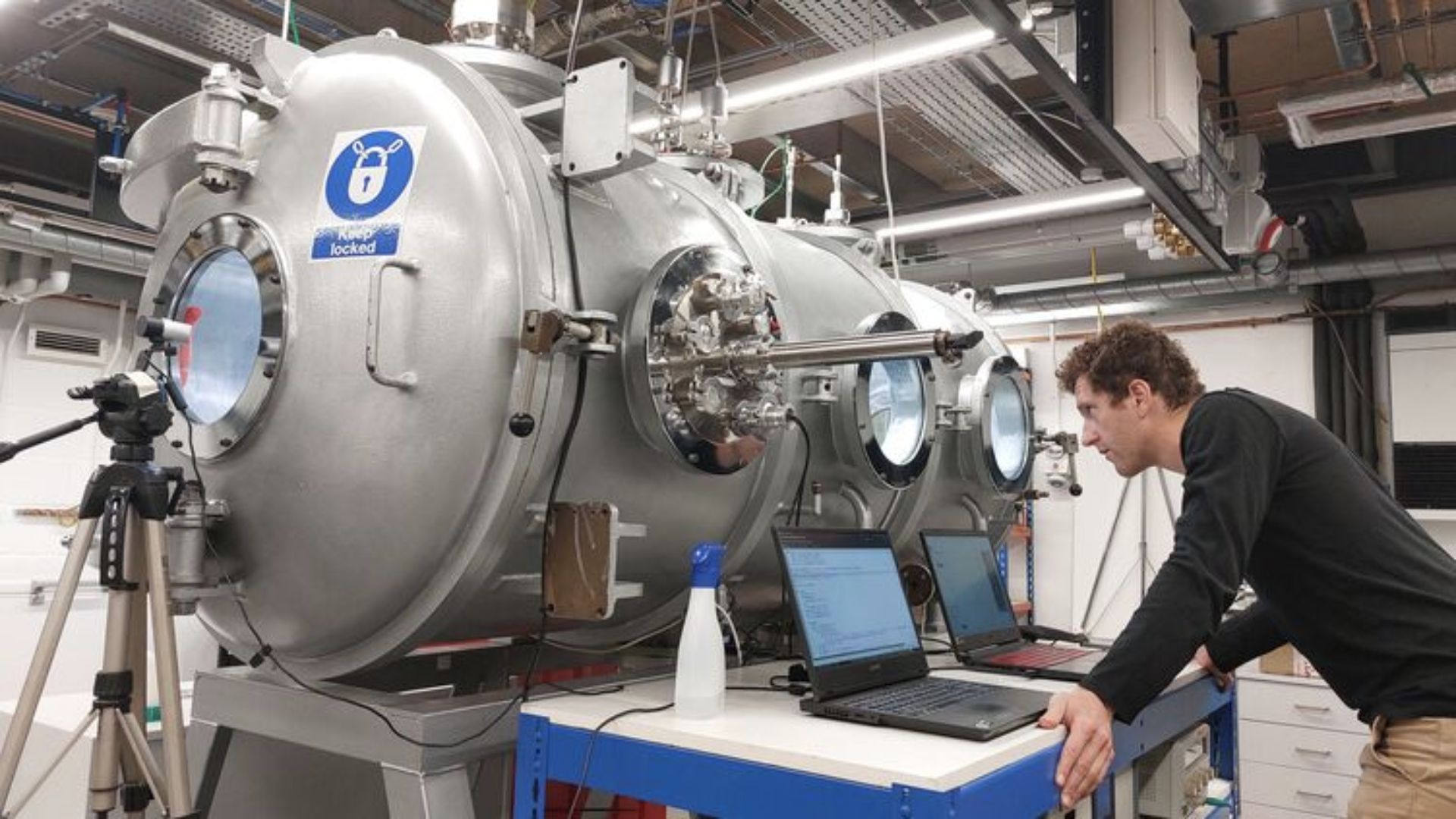A team of scientists from the University of Sheffield, the Open University, and the Czech Academy of Sciences has recreated the extreme conditions of deep space volcanoes in the laboratory.
The researchers simulated volcanic activity on icy moons and, in doing so, shed light on the unstable behavior of water.
In order to investigate how water behavior might be driving geologic changes on icy moons, they used a specially-built low-pressure chamber to create conditions similar to those found on Europa and Enceladus.
Simulating cryovolcanic activity
In deep space, water behaves very differently to how it does on our planet. The near-zero pressure conditions make water undergo both boiling and freezing at the very same time.
Icy moons feature an icy outer shell with a liquid ocean underneath. Much in the same way that lava reshapes Earth’s surface, water reshapes icy moons via a process called cryovolcanism.
To better understand this process, the team of scientists turned to their low-pressure chamber to simulate real icy moons, a press statement reveals. The low-pressure chamber, nicknamed ‘George’, is called the Large Dirty Mars Chamber. It resides at the Open University in Milton Keynes, England.
Europa is the icy moon orbiting Jupiter. Some scientists have suggested it might be harboring microbial alien life due to the vast ocean under its icy surface. Enceladus orbits Saturn, and its methane geysers have also garnered attention from scientists looking for life in our solar system.
On Enceladus, the temperature at the equator is -193 degrees C. Astronomers have observed massive jets of water vapor being ejected into space by a volcano-like process called explosive cryovolcanism.
Scientists believe cryovolcanism occurs at the same time as another process called effusive cryovolcanism. During this process, liquid is released on the icy moon’s surface in a similar fashion to lava flow on Earth.
The team of researchers behind the new study set out to investigate effusive cryovolcanism, which has been difficult for astronomers to observe. To do so, they studied the behavior of water in their near-vacuum environment. The team published their findings in a new paper in the journal Earth and Planetary Sciences Letters.
Identifying ancient signs of cryovolcanic activity
During their experiments, the team piped large amounts of water into the Large Dirty Mars Chamber and observed the effects through observation ports.
They found that, as pressure inside the chamber was lowered, the water began to bubble and boil, despite its low temperature. This boiling process created vapour, which transferred heat away from the water. The water then cooled, started to freeze, and floating ice pieces formed. Within a few minutes, most of the water was covered by thin ice.
Below this icy film, the liquid water continued to boil, and bubbles would break and deform the ice layer. This would allow water to effuse or escape through cracks onto the icy surface. This behavior contradicted earlier studies that suggested a thick ice crust would form, preventing further boiling and sealing off the water. Those studies involved much smaller water volumes.
The researchers believe their study could help identify ancient signs of cryovolcanic activity on icy moons and other celestial bodies throughout the Solar System. This could help scientists hone in on specific locations in their search for signs of ancient microbial life.
